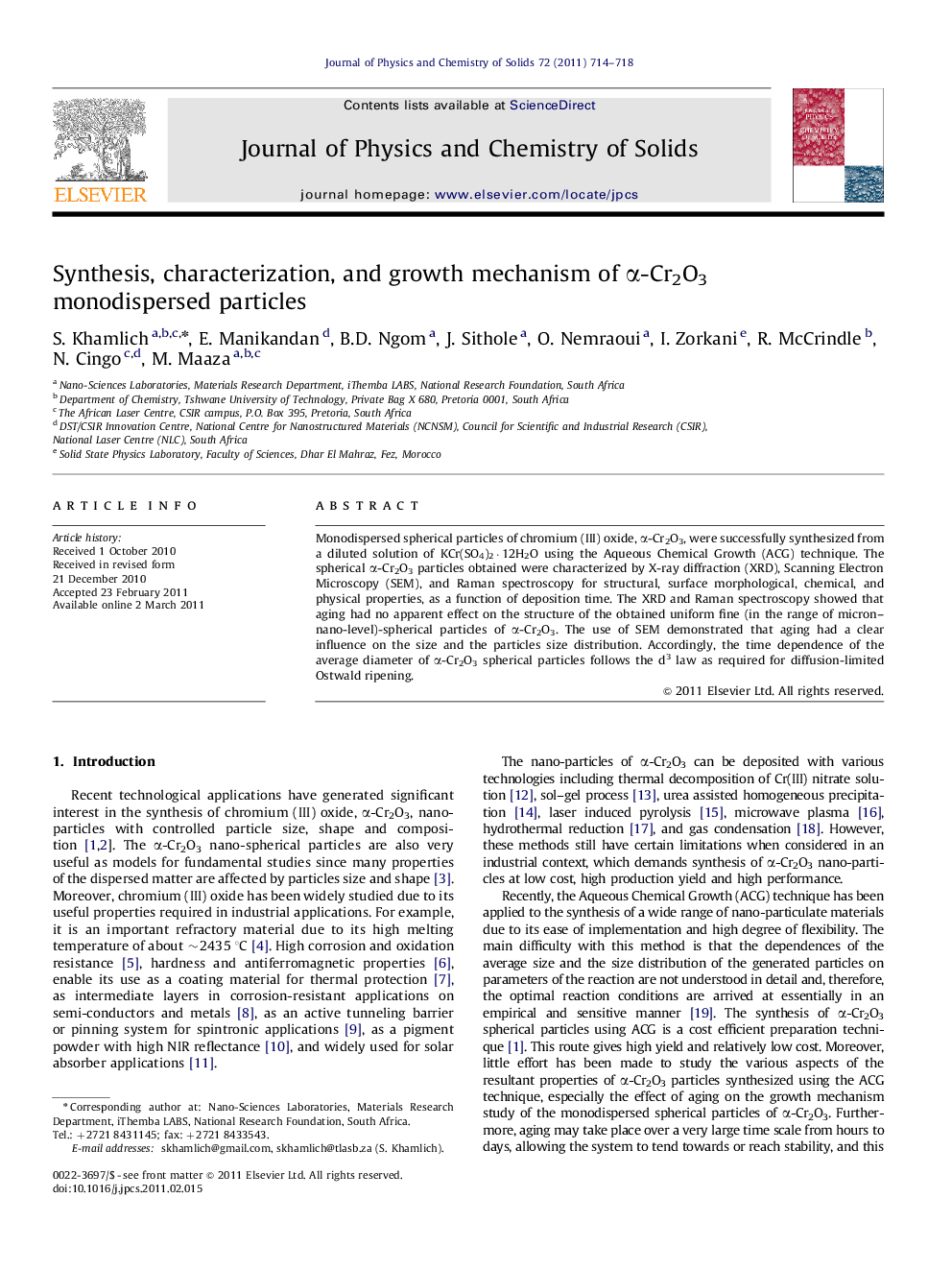| Article ID | Journal | Published Year | Pages | File Type |
|---|---|---|---|---|
| 1517026 | Journal of Physics and Chemistry of Solids | 2011 | 5 Pages |
Monodispersed spherical particles of chromium (III) oxide, α-Cr2O3, were successfully synthesized from a diluted solution of KCr(SO4)2·12H2O using the Aqueous Chemical Growth (ACG) technique. The spherical α-Cr2O3 particles obtained were characterized by X-ray diffraction (XRD), Scanning Electron Microscopy (SEM), and Raman spectroscopy for structural, surface morphological, chemical, and physical properties, as a function of deposition time. The XRD and Raman spectroscopy showed that aging had no apparent effect on the structure of the obtained uniform fine (in the range of micron–nano-level)-spherical particles of α-Cr2O3. The use of SEM demonstrated that aging had a clear influence on the size and the particles size distribution. Accordingly, the time dependence of the average diameter of α-Cr2O3 spherical particles follows the d3 law as required for diffusion-limited Ostwald ripening.
Graphical abstractMonodispersed spherical particles of chromium (III) oxide, α-Cr2O3, were successfully synthesized. Moreover, SEM measurements demonstrated that aging had a clear influence on the average diameter. Accordingly, the time dependence of the average diameter of α-Cr2O3 spherical particles follows the d3 law as required for diffusion-limited Ostwald ripening.Figure optionsDownload full-size imageDownload as PowerPoint slideHighlights► α-Cr2O3 monodispersed spherical particles were successfully synthesized by the Aqueous Chemical Growth (ACG) technique. ► The growth mechanism of α-Cr2O3 follows the d3 law as required for diffusion-limited Ostwald ripening according to the Lifshitz–Slyozov–Wagner (LSW) theory. ► The understanding of the growth mechanism would enable us to design future experiments to obtain better control of the morphology of the produced monodispersed spherical particles of chromium (III) oxide.
